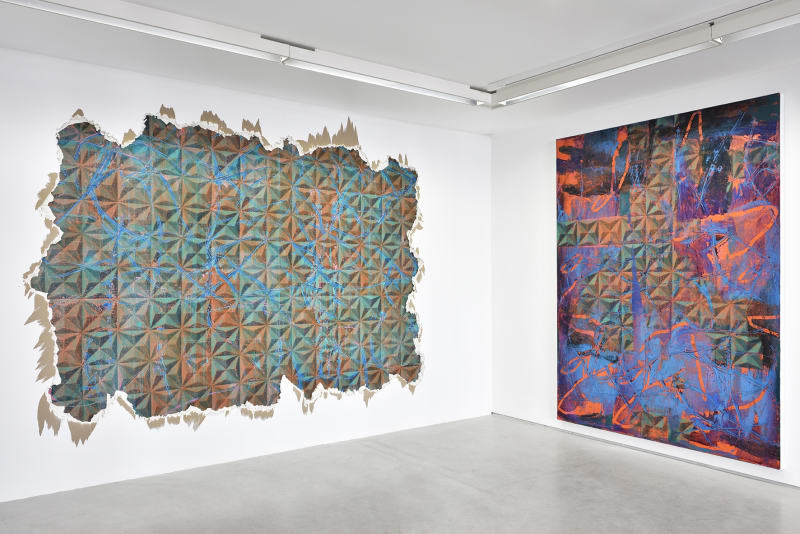Just before the lockdown began, I sent Christophe Gaillard several photographs of painted portraits of Fantômas and we quickly agreed to have an exhibition in his gallery. These portraits are a bit particular. Every year, for nearly ten years now, I let myself paint this character, me, who hardly ever paints….
It’s the face of Fantômas as shown in André Hunebelle’s film with Louis de Funès and Jean Marais. As a child, this face terrified me the first time I saw it but ever since, I’ve been convinced that the plasticity and the colour of the mask raise completely pictorial questions for me.
And that’s how each year I paint this face, making a sort of painting of a painting. Captain Ahab falls asleep every evening with his white whale obsession, and I wake up amazed by the blue skin of Marais’s mask. We all have our own ghosts.
This skin, this texture and this colour are a mise en abime of the painting, of its deep surface.
Apollinaire and Max Jacob viewed this 1913 character as a libertarian anarchist, a new myth of modern man. Desnos and Queneau wrote articles and poems about him, the surrealists called themselves “Fantomasians”, Magritte and even Eduardo Arroyo painted him, Mike Patton used the name Fantômas for his experimental rock group… Obviously I only learned all of that afterwards. Like in the novels of Henry James or Edith Wharton, the shadows advance while looking backwards.
Ghosts inhabit paintings like paintings inhabit history, passing through walls. In one sense you have to believe in ghosts to believe in painting. A ghost is ubiquity incarnate (the motto of Fantômas is “I am everywhere”), it’s also a multiple and changing identity, it’s the dreamed of person looking at the sleeping dreamer, the ghost is the perpendicular image.

